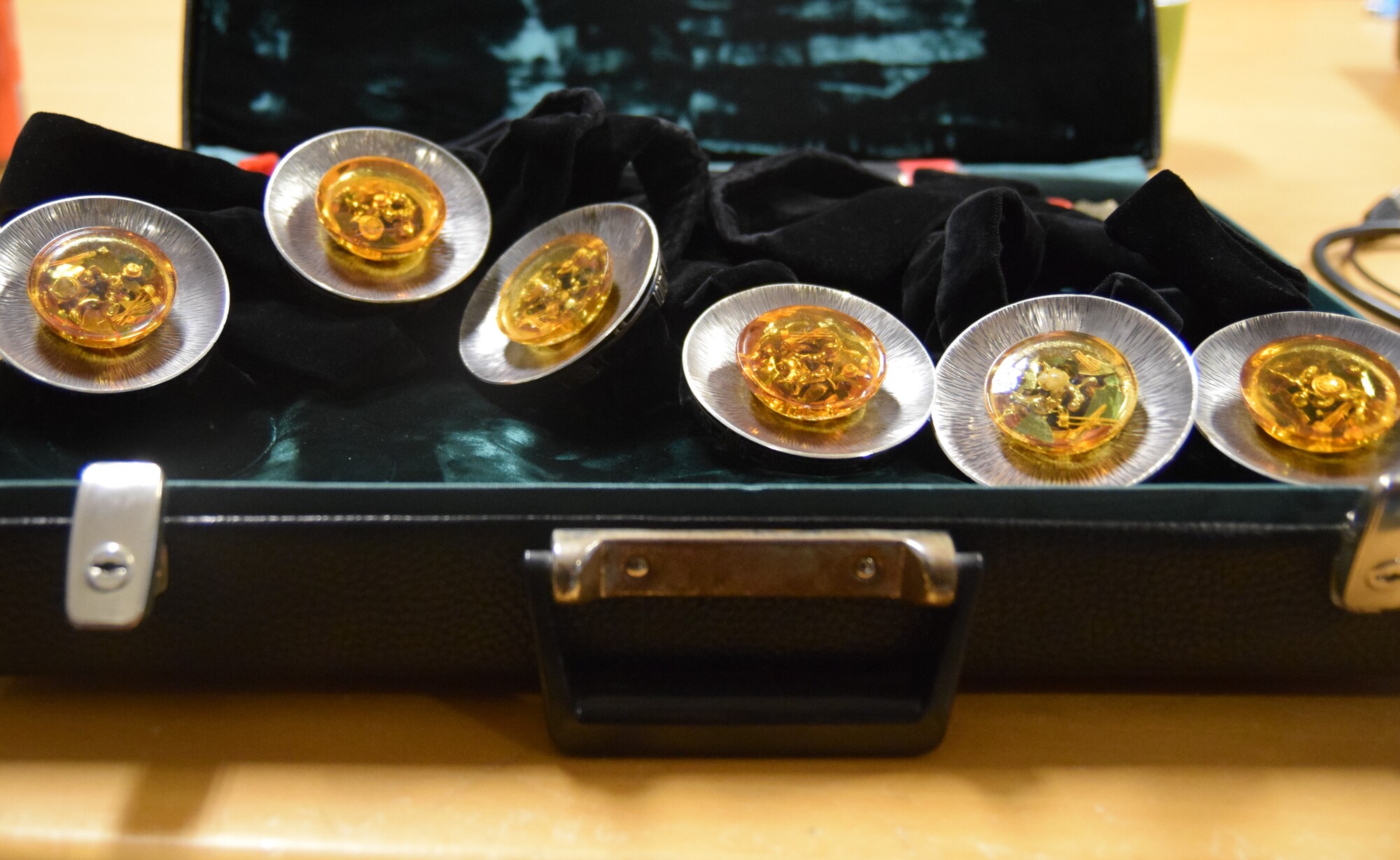Scintilla's Chains of Office (Penningen)
They are hung around the necks of the brand new board members every change GMM, they are visible on every board photo. Yet very little is known about them, despite the fact that when handed over to the new board members a story is told about why each one belongs to a specific board position. I’m talking, of course, about Scintilla’s chains of office.
During my period as part of a candidate board it became clear that the chains of office were no longer insured. It was going to be my board’s job to have them appraised, and to look into a new insurance policy. Now it has turned out that it is very difficult to appraise things, we were denied taxation on numerous occasions. One thing had become clear: secretly the chains of office are worth quite a bit, because they are (probably) made of amber and silver. These materials are certainly not cheap, but is that purely the reason why board members flaunt the chains of office so much?
Chains of Office?
What is the idea behind wearing such necklaces at all? In the Netherlands, there are a few reasons to wear a so-called chain of office: as mayor, as lieutenant governor of Bonaire, Sint Eustatius, or Saba, or as Rector Magnificus of a University. This tradition came from the UK, where first royalty used so-called livery collars to denote relationships to each other. Later most mayors adapted the wearing of collars/chains of office, after which in 1852 a royal decree came to put the practice in use in The Netherlands. So basically, royalty started, then mayors copied the tradition, and I therefore suspect that study associations have copied the practice from the University, although I cannot state this with certainty.

Figure 1: Close-up of a Chain of Office.
Diving into the Archives
I went into the archives on a hot summer day, hoping to find answers to all my questions about the chains of office, and their history. But actually I found out that there is not much information to be found in the archive from the distant past. As real techies, only necessary things were stored, such as minutes and Vonk booklets. What I could find about the medals consisted of two things: a photo from 1969, and a program booklet of the first lustrum in 1970. In the program booklet you can see that there is a talk by the then Rector Magnificus, where a handing over of the chains of office is mentioned. The story I’ve heard about this is that when Scintilla was founded, Thor and ETV came by with gifts, but the University of Twente itself had nothing. In order not to be left behind, they would come up with something, which happened during our first lustrum. The funny thing is, that a photo from a year earlier shows the board from then, in Berlin, with the chains of office on, a full year before Scintilla got them! So before the official gifting of the chains of office board members could already be seen flexing with them.

Figure 2: All the chains together in their suitcase.
I even had contact with a member of that specific board, but it was too long ago for him to remember what was going on with the chains of office back then, unfortunately. He did say a drink or two could bring back memories, but he is a busy man so a meeting has not happened yet. In the time since whenever we got them, some of the chains have had a rough time. There is a dent in one of them, and new amber on one of them as well. Of course, the one with the dent belongs to the Commissioner of Internal Affairs… Guess it is hard to take care of your chain of office when you are a few drinks in. As you can see, on the bottom side there are a bunch of numbers, grouped into bundles of five. Of course, this means something right? I found out that the numbers are in the International Telegraph Alphabet No. 2, which was the foundation for the American Teletypewriter code, a code used for 5-bits typewriters. The assumption here is that 5-bit typewriters were used at the University of Twente in the early years. The code, translated to the latin alphabet, reads SCINTILLA!
Figure 3: Dent in the chain and the bits on the back.
Within the amber there are a bunch of components, and each change-GMM the board on its way out tells stories of how the components are arranged in a special manner, one that symbolises the board function related to that specific chain of office. If you want to hear these stories, definitely come to the next change-GMM!
If you ever find out more about the chains of office, or other interesting stories of Scintilla’s past, don’t hesitate to contact the Vonk committee! They usually are interested in stories such as this one. Maybe one day Scintilla will have a committee dedicated to the archives…
